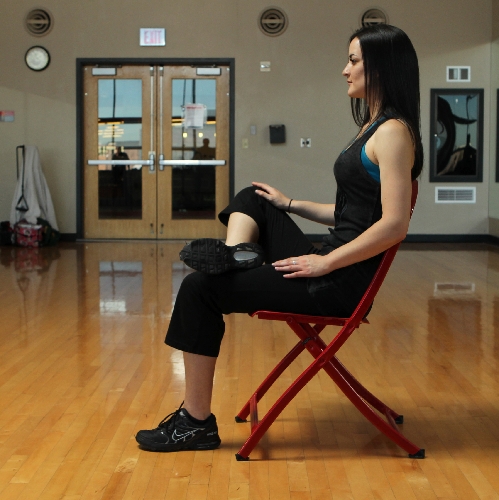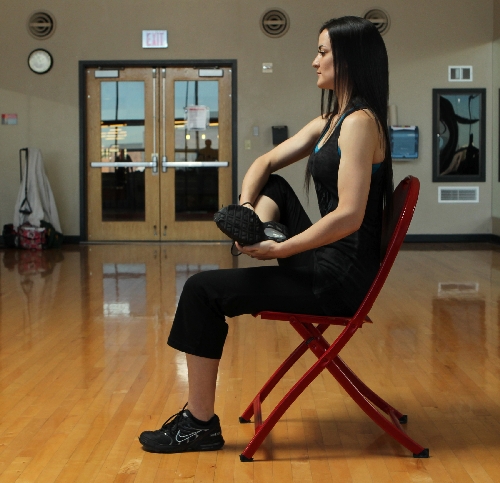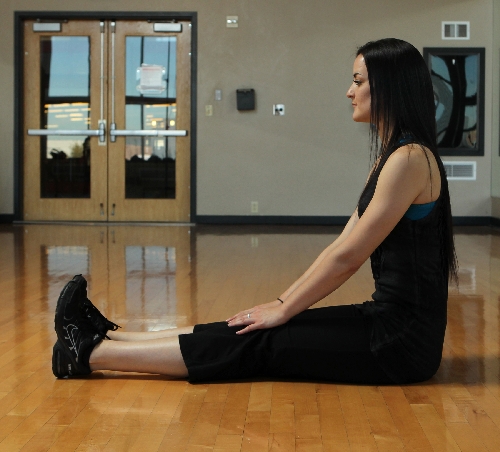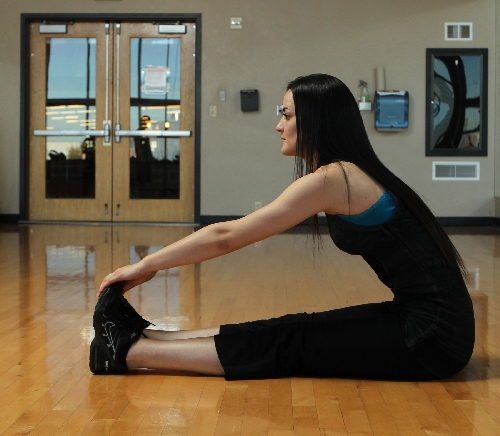Better range of motion is right down the stretch




Stretching is one of the hardest things I do in my workouts. I don’t have the limber gene so I have to work on simple things to maintain my own flexibility. If I neglect proper stretching, my muscles tighten and stay sore longer.
As a trainer, I use stretching to inhibit overactive muscles and increase range of motion. I often recommend that my clients stretch after they have used a foam roll to ease the knots in their muscles. You can stretch before or after your workout, whether it be cardio or weight training, as part of your warm up or cool down. If you feel that your muscles are tighter than they should be, you should stretch on your off days, too.
Dealing with tight muscles can be frustrating because increasing your flexibility can take time. If you’re anything like me, touching your toes can be difficult. I had to stretch religiously for a few weeks before I finally reached my toes. Others seem to have wonderful flexibility and make it look easy.
The reasons for being tight can vary. Many people get tight muscles from doing the same exercises repeatedly. For example, men tend to like working their chest. Overdoing it on the chest exercises can make the pectorals tight, which can lead to the shoulders rounding forward into a slouch.
Another reason can be repetitive stress from an occupation. If you’re on your feet all day then one or both of your calf muscles will be tight. Sitting at a desk day in and day out will contribute to tight chest muscles and weak back muscles.
The body has a method it uses to repair muscle strain. After the trauma, the muscle becomes inflamed and may go into a spasm. Next, knots begin to form, which make the muscle tight and causes poor form or posture. If tight muscles are not stretched, the stress you put on your body as part of training will accumulate and can lead to injury.
Some people who have suffered an injury discover they have become tight as part of the healing process. Careful stretching improves flexibility and range of motion. This is where trainers are helpful. They can design a program to safely improve range of motion and overcome tightness. If you have been to rehabilitation after an injury or surgery, the best thing you can do is the simple stretches and exercises your therapist advises.
Stretching relieves stress from overworked muscles. There are a few different types of stretching techniques depending on your fitness level. If you are correcting posture or have limited range of motion, then you will use static stretching. If you have nothing to correct, then use active stretching as a warm-up or cool-down. If you have good balance and a strong core, then use active stretching to increase your flexibility.
Static stretching is stretching a muscle to the point of tension and holding that stretch for a specific duration of time. Static stretches are usually held for 20-30 seconds and done in repetitions of one to two. The toe-touch stretch below is a good example of a static stretch for the hamstrings.
Active stretching is holding a stretch for a brief period of time (2 seconds) for a few repetitions. This kind of stretching uses one set of muscles to stretch another set of muscles. For example, to stretch the hamstring on the back of the thigh, you would lie down on your back, raise one leg with the knee bent and support it by locking the hands behind the hamstring. You would then straighten the leg by tightening the quads, causing the hamstrings to stretch.
Dynamic stretching uses momentum to stretch the muscles through a full range of motion. Walking lunges are a good example of dynamic stretching. The momentum of getting into lunge position will stretch the hamstrings. You then use those same muscles to bring yourself back out of the lunge. These can be done in sets of 10-15.
Yoga is a great way to learn and practice stretching. Depending on the type of class, it uses all three techniques. Some movements are static, others are active, others are dynamic. Most movements have beginner, intermediate and advanced variations. Instructors will show them during class time.
Yes, I do take yoga. It was difficult for me to walk into my first yoga class without my wife. I was afraid I wouldn’t remember the different poses. I didn’t need to be afraid. I found a place toward the back and just copied what the instructor did. Instructors like new class members and are eager to assist you. Yoga mats do come in guy colors, too. Mine even has the more common poses printed on it to help me remember.
Chris Huth is a Las Vegas trainer. You can contact him at 702trainer@gmail.com. Before beginning any exercise program, consult your physician.
Photos for this column were taken at UNLV’s Student Recreation and Wellness Center. Although the facility’s primary clientele is students, faculty and staff, the center also welcomes community members 18 and older at a monthly fee of $25. You can contact the service desk at 774-7100 or by email at srwc.memberships@unlv.edu.











